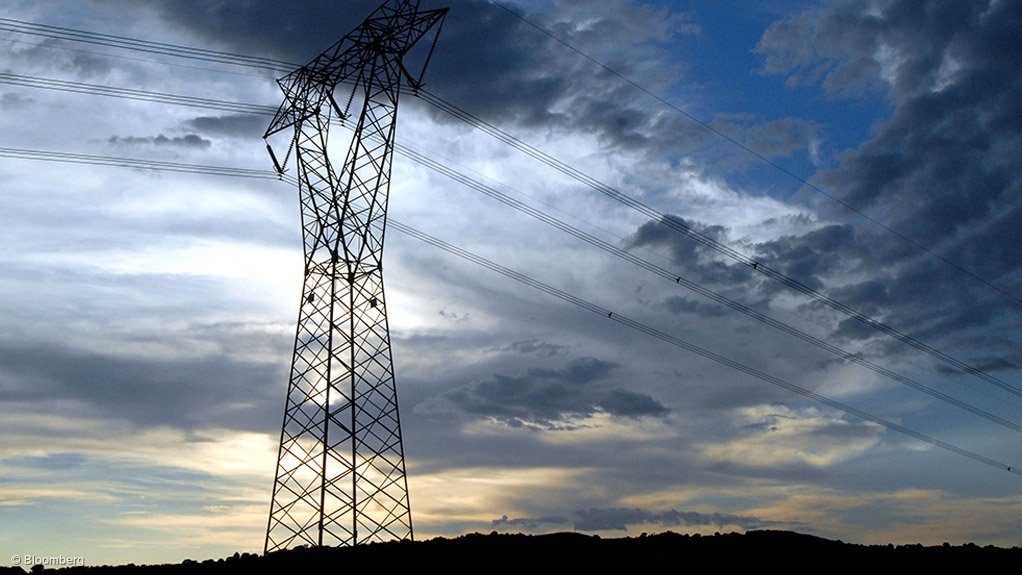Energy management regulations out for public comment


OUT FOR PUBLIC COMMENT The draft regulations are part of a series of policy changes to promote behaviour change among businesses
Photo by Bloomberg
The draft proposal requiring all businesses that use more than 400 TJ/y of energy to submit five-year energy management plans, by law, is out for public comment, reports business coalition National Business Initiative (NBI) energy head Valerie Geen.
The Department of Energy released the proposal, titled Draft Regulations Regarding Registration, Reporting on Energy Management and Submission of Energy Management Plans, for public comment under the National Energy Act on March 27.
These regulations are part of a series of policy changes to promote behaviour change and the optimisation of energy consumption among businesses, says Geen.
She asserts that these laws are a significant step towards making companies aware of their energy consumption and the opportunities foregone if energy is not managed efficiently. She suggests that this will also stimulate the market for new professional skills in energy auditing, measurement and verification, among other capabilities that companies would be required to obtain owing to a demand for data collection and energy management.
Geen believes that several companies are unaware of the potential energy consumption cost savings and, therefore, highlights the NBI’s Private Sector Energy Efficiency (PSEE) programme, which assists businesses to become more energy efficient through a grant of £8.6-million from the UK Department for International Development.
The PSEE programme’s services include free site surveys for medium-size companies, developing strategic energy management plans for large companies, as well as workshops and advice services for small companies.
The PSEE programme was launched at the end of 2013, together with the 12L tax incentive, which provides tax reductions for companies that have shown marked improvements in energy efficiency.
Geen says that targeting large companies gives the PSEE programme leverage to implement energy efficiency projects, as it provides companies with access to a whole supply chain of companies with established business relationships.
Retail company Woolworths, for example, provided the PSEE programme with contacts for 114 of its suppliers, 78 of which agreed to work with the programme, says Geen.
She adds that another benefit of targeting the supply chains of large corporations is that it assists companies participating in the Carbon Disclosure Project (CDP), which is closely associated with the PSEE. The CDP helps companies to identify risks and opportunities associated with climate change, as companies report the Scope 3 emissions that lie in their supply chains.
Room to Improve
While the PSEE programme has shown a lot of promise, Geen acknowledges that there is still much work to be done, especially in terms of changing people’s attitudes and behaviours.
Raising awareness is a central tenet of the programme and is something that is done regularly to facilitate the constant changes that are part of being energy efficient, she adds.
Geen notes that energy efficient behaviour needs to be mirrored in government for energy efficiency policies to be implemented properly.
She reveals that, while its initial goal was to attract 63 large companies to the programme by November, 30 large companies have signed up for the PSEE thus far, while more than 320 medium- size companies have joined the programme, with opportunities for participation still open.
She says the main reason for the shortfall is that many large companies believe that they have implemented sufficient measures to enhance their energy efficiency. Also, companies remain apprehensive in their attitude towards the PSEE because they confuse energy conservation with energy efficiency. Energy conservation is, for example, switching off a light, whereas energy efficiency is using a light bulb that uses less energy to create the same amount of light, Geen explains.
She maintains that the PSEE programme even benefits consulting firms as it enables them to enhance their own experience in the support they give companies.
“This is because the PSEE programme provides an additional oversight role by pushing the envelope for energy efficiency and energy management. We have found that there is always room for improvement, even within consulting services.”
Geen adds that the programme has also indicated that some energy managers in big corporations do not have adequate support from their chief financial officers or procurement managers for the capital layout expenditure and for company procurement to take energy efficiency into account alongside cost. Where companies think short-term in their capital investments, rising energy prices may lead to future stranded assets, she points out.
Finally, Geen highlights that financing is one of the most significant challenges that the NBI’s PSEE programme addresses. Through its connection with the programme members and government, as well as its relationship with banks and financial institutions, the PSEE programme provides financing avenues for companies that would otherwise not have known how to finance the capital layout required for implementing an energy efficiency plan, she concludes.
Comments
Press Office
Announcements
What's On
Subscribe to improve your user experience...
Option 1 (equivalent of R125 a month):
Receive a weekly copy of Creamer Media's Engineering News & Mining Weekly magazine
(print copy for those in South Africa and e-magazine for those outside of South Africa)
Receive daily email newsletters
Access to full search results
Access archive of magazine back copies
Access to Projects in Progress
Access to ONE Research Report of your choice in PDF format
Option 2 (equivalent of R375 a month):
All benefits from Option 1
PLUS
Access to Creamer Media's Research Channel Africa for ALL Research Reports, in PDF format, on various industrial and mining sectors
including Electricity; Water; Energy Transition; Hydrogen; Roads, Rail and Ports; Coal; Gold; Platinum; Battery Metals; etc.
Already a subscriber?
Forgotten your password?
Receive weekly copy of Creamer Media's Engineering News & Mining Weekly magazine (print copy for those in South Africa and e-magazine for those outside of South Africa)
➕
Recieve daily email newsletters
➕
Access to full search results
➕
Access archive of magazine back copies
➕
Access to Projects in Progress
➕
Access to ONE Research Report of your choice in PDF format
RESEARCH CHANNEL AFRICA
R4500 (equivalent of R375 a month)
SUBSCRIBEAll benefits from Option 1
➕
Access to Creamer Media's Research Channel Africa for ALL Research Reports on various industrial and mining sectors, in PDF format, including on:
Electricity
➕
Water
➕
Energy Transition
➕
Hydrogen
➕
Roads, Rail and Ports
➕
Coal
➕
Gold
➕
Platinum
➕
Battery Metals
➕
etc.
Receive all benefits from Option 1 or Option 2 delivered to numerous people at your company
➕
Multiple User names and Passwords for simultaneous log-ins
➕
Intranet integration access to all in your organisation



















